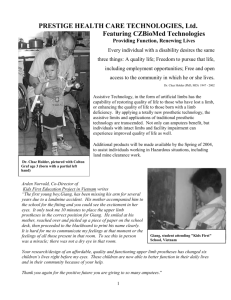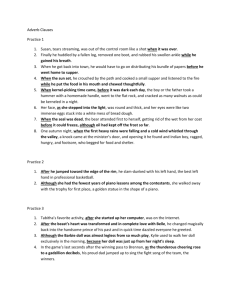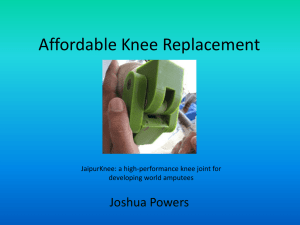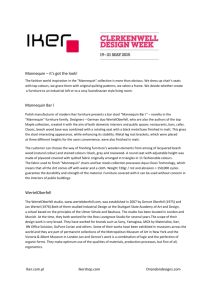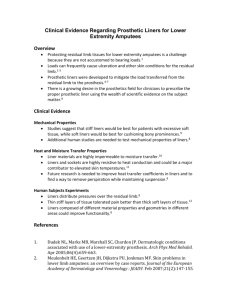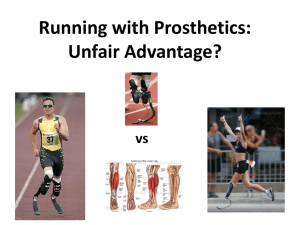Design Brief: Building a Body Part
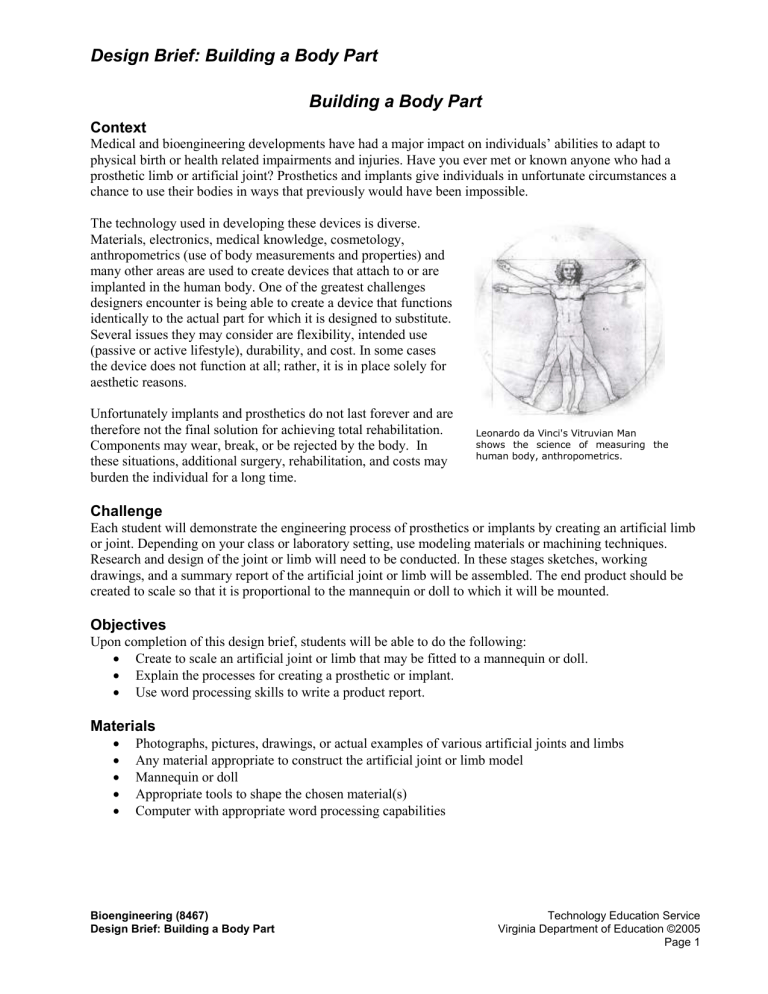
Design Brief: Building a Body Part
Building a Body Part
Context
Medical and bioengineering developments have had a major impact on individuals’ abilities to adapt to physical birth or health related impairments and injuries. Have you ever met or known anyone who had a prosthetic limb or artificial joint? Prosthetics and implants give individuals in unfortunate circumstances a chance to use their bodies in ways that previously would have been impossible.
The technology used in developing these devices is diverse.
Materials, electronics, medical knowledge, cosmetology, anthropometrics (use of body measurements and properties) and many other areas are used to create devices that attach to or are implanted in the human body. One of the greatest challenges designers encounter is being able to create a device that functions identically to the actual part for which it is designed to substitute.
Several issues they may consider are flexibility, intended use
(passive or active lifestyle), durability, and cost. In some cases the device does not function at all; rather, it is in place solely for aesthetic reasons.
Unfortunately implants and prosthetics do not last forever and are therefore not the final solution for achieving total rehabilitation.
Components may wear, break, or be rejected by the body. In these situations, additional surgery, rehabilitation, and costs may burden the individual for a long time.
Leonardo da Vinci's Vitruvian Man shows the science of measuring the human body, anthropometrics.
Challenge
Each student will demonstrate the engineering process of prosthetics or implants by creating an artificial limb or joint. Depending on your class or laboratory setting, use modeling materials or machining techniques.
Research and design of the joint or limb will need to be conducted. In these stages sketches, working drawings, and a summary report of the artificial joint or limb will be assembled. The end product should be created to scale so that it is proportional to the mannequin or doll to which it will be mounted.
Objectives
Upon completion of this design brief, students will be able to do the following:
Create to scale an artificial joint or limb that may be fitted to a mannequin or doll.
Explain the processes for creating a prosthetic or implant.
Use word processing skills to write a product report.
Materials
Photographs, pictures, drawings, or actual examples of various artificial joints and limbs
Any material appropriate to construct the artificial joint or limb model
Mannequin or doll
Appropriate tools to shape the chosen material(s)
Computer with appropriate word processing capabilities
Bioengineering (8467)
Design Brief: Building a Body Part
Technology Education Service
Virginia Department of Education ©2005
Page 1
Design Brief: Building a Body Part
References
American Academy of Orthotists and Prosthetists. The Orthotics and Prosthetics Profession . http://www.oandp.org/jpo/library/1990_03_175.asp
Arthroscopy.com
. http://www.arthroscopy.com/sports.htm
Evaluation
Use the rubric below to evaluate student work. The left column lists the performance elements that correspond to the objectives above. Additional assessment could come from student design portfolios containing brainstorming and documentation of source material.
Create to scale an artificial joint or limb that may be fitted to a mannequin or doll.
Explain the processes for creating a prosthetic or implant.
Use word processing skills to write a product report.
Excellent
Creations include a joint or limb that is built to scale and fitted to the mannequin or doll. The model shows excellent craftsmanship.
Average
Creations include a joint or limb that is built to scale and fitted to the mannequin or doll. The model shows good craftsmanship.
Unacceptable
Creations include a joint or limb that is built to scale and fitted to the mannequin or doll.
The model shows poor craftsmanship.
Demonstrations include a list of steps used to produce/manufacture a prosthetic or implant. Note that these will vary depending on the tools and materials available in your laboratory or classroom. Your teacher will specify the performance elements for this objective.
Demonstrations include a clearly written report that lists and explains the research, design, manufacture, testing, fitting, and maintenance of a prosthetic or implant.
Very good grammar and word processing skills are demonstrated.
Demonstrations include a written plan that lists and explains the research, design, manufacture, testing, fitting, and maintenance of a prosthetic or implant.
Good grammar and word processing skills are demonstrated.
Demonstrations include a written plan that lists and explains the research, design, manufacture, testing, fitting, and maintenance of a prosthetic or implant. Good grammar and word processing skills are not adequately demonstrated.
Bioengineering (8467)
Design Brief: Building a Body Part
Technology Education Service
Virginia Department of Education ©2005
Page 2


